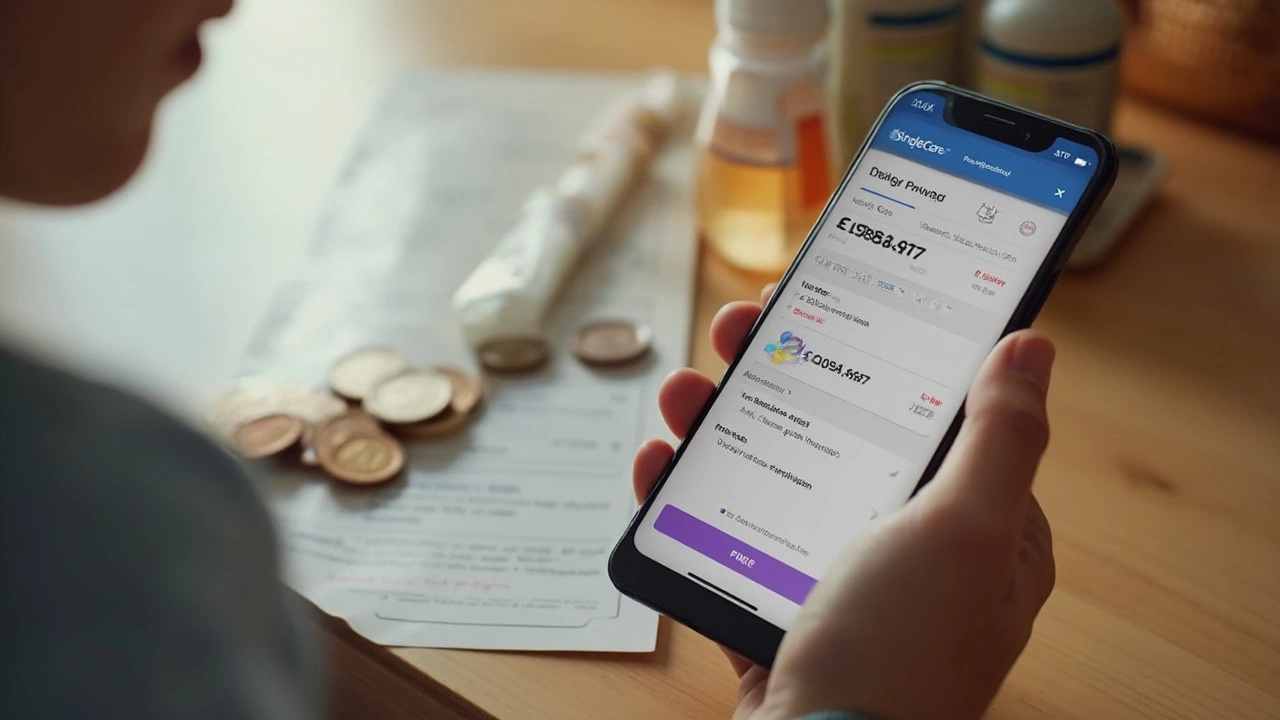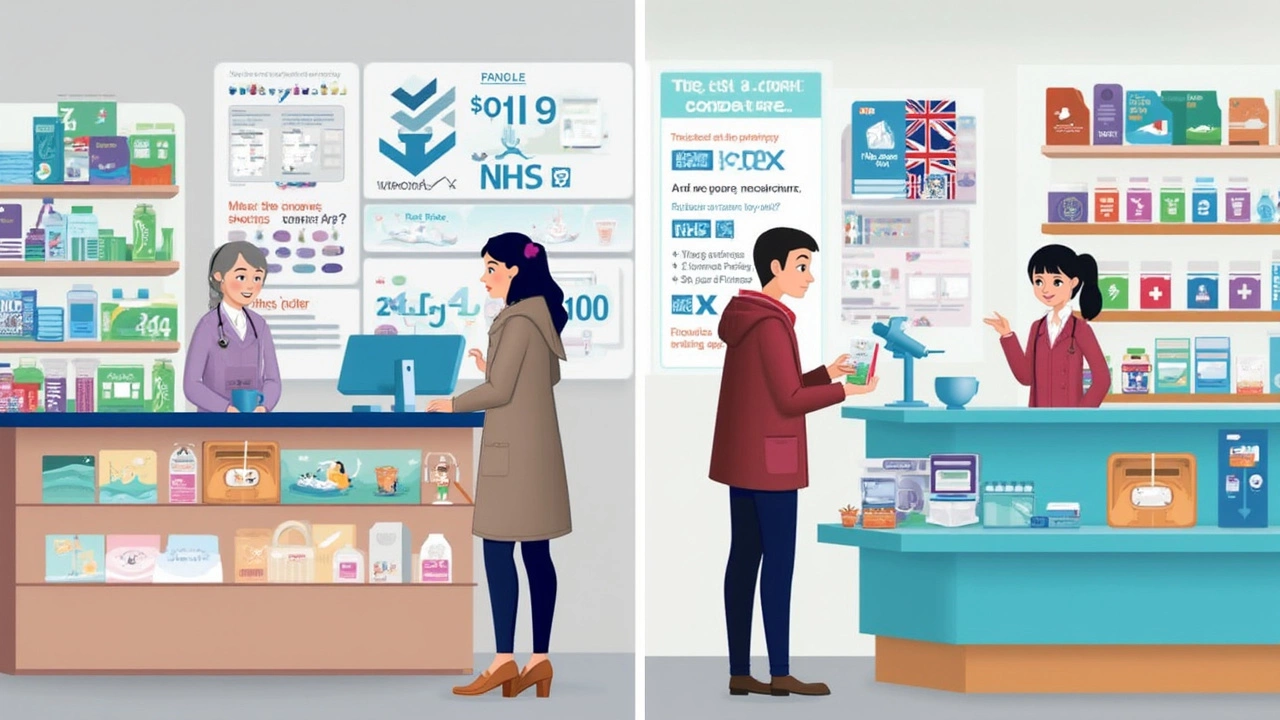
Think SingleCare charges a monthly fee? That’s a common myth, but here’s the real deal: you don’t pay a cent to use SingleCare. No subscription fees. No membership card charges. You just sign up for free and use their discount card or app when you need a prescription filled. It’s all about getting lower prices at the pharmacy, not paying for extra memberships you may never use.
Here’s the catch—there isn’t one, at least when it comes to up-front costs. You only pay for your medication; the discount applies automatically if your pharmacist runs the SingleCare code with your prescription. So if you’re trying to budget for monthly healthcare expenses, there’s nothing to add for SingleCare itself. Honestly, it’s one less thing to worry about in a world where everything else seems to ask for a monthly subscription fee.
- What Is SingleCare and How Does It Work?
- Is There a Monthly Fee to Use SingleCare?
- How SingleCare Actually Saves You Money
- Hidden Costs and Real-World Experiences
- SingleCare vs. Other Prescription Discount Options
What Is SingleCare and How Does It Work?
You might have seen ads for SingleCare or noticed people pulling out a little purple discount card at the pharmacy. Here’s the short version: SingleCare is a prescription discount program that helps you pay less for your medicines. It isn’t health insurance, but it can sometimes bring your price way below what insurance would charge, especially if you have a high deductible or medications that aren’t covered.
Anyone can use SingleCare. There’s no age limit, no paperwork, and you don’t even need to have insurance. It’s open to everyone, which makes it handy if you’re uninsured or just looking for better prices.
Here’s how it works:
- Search for your prescription on the SingleCare website or app. You’ll see prices for different local pharmacies—sometimes there’s a surprisingly big price difference.
- Pick the pharmacy you like and either print out the discount card, send it to your phone, or just use the app at the counter.
- Hand the card (or show your phone) to the pharmacist along with your prescription. They enter the SingleCare code and you pay the discounted price shown in the app or on the website.
One thing a lot of people don’t realize: SingleCare can be used every time you fill a prescription, not just for special situations. There’s no limit and no hoops to jump through.
Some quick stats to show how it actually works in the real world:
| Year Founded | Number of Partner Pharmacies | Reported Average Savings |
|---|---|---|
| 2014 | 35,000+ | up to 80% |
So, to recap: SingleCare is totally free and crazy simple. You just check prices, show the card, and pay less for your meds—no monthly cost, no commitment, no catch.
Is There a Monthly Fee to Use SingleCare?
If you’re wondering about SingleCare’s monthly cost, here’s the simple answer: there isn’t one. Seriously, SingleCare is 100% free to use. There’s no membership fee, no enrollment charge, and no credit card needed. You don’t even have to make an account unless you want to track your savings or store your prescriptions online.
Unlike some clubs or pharmacy subscription programs, you don’t get a bill or auto-renewal charge each month from SingleCare. You only pay for your meds at the pharmacy counter—the price you see with your SingleCare discount is exactly what you’ll pay, nothing extra.
Here’s what you get for free:
- Access to SingleCare’s online price comparison tool
- A prescription discount card (either printed, emailed, or through the app)
- Discounts at over 35,000 pharmacies across the U.S.
- No cap on how many prescriptions you use it for
Plenty of people worry there’s got to be a hidden cost if something says it’s free, but with SingleCare, that’s just not the case. Pharmacies pay SingleCare a small fee for every transaction, so the service stays free for folks like you who need lower prescription costs.
For a quick look at how SingleCare compares with monthly-fee competitors, check out this table:
| Prescription Savings Program | Monthly Membership Fee | Access to Discounts |
|---|---|---|
| SingleCare | $0 | Yes |
| GoodRx Gold | $9.99 | Yes (Gold prices only with subscription) |
| Walmart+ Rx | $12.95 | Yes (Walmart stores only) |
So the next time you fill a prescription, remember: using SingleCare won’t add a new bill to your monthly expenses. You get savings up front without paying for another subscription.

How SingleCare Actually Saves You Money
Here’s where it gets practical. SingleCare works by negotiating lower prices on prescription meds with thousands of pharmacies. Think of it like clipping a digital coupon—except you don’t have to mess with scissors or piles of paper. You just pull up the offer on your phone or print the card, and show it at the pharmacy. The discount gets applied right away, and you pay the cheaper price then and there.
The big win? It works whether or not you have insurance. Sometimes, the price with SingleCare is actually lower than what you’d pay with your insurance copay. A lot of people just assume insurance is always cheaper, but that’s not always true. In a price comparison study by the National Community Pharmacists Association, patients saved an average of 45% off retail prices on generic meds with prescription discount programs like SingleCare.
Let’s break down how you use it:
- Go to the SingleCare website or app.
- Type in your prescription drug’s name and your zip code.
- Compare prices at pharmacies near you—yep, prices can be different from one store to the next.
- Pick the best deal and either send the coupon to your phone or print it.
- When you get your prescription filled, show the code or card at the counter.
No phone calls, no mailing checks, no paperwork. Just instant discounts.
| Drug Type | Average Discount % |
|---|---|
| Generic | 45% |
| Brand Name | 20% |
Despite all these savings, SingleCare doesn’t force you into a contract or auto-renew. Use it only when you need it. Bonus: your family and even pets can use the service, as long as you have the code. So, if you’re sick of sky-high med bills, it’s worth checking the price before you fill your next prescription. Sometimes, it beats your insurance or even those pharmacy customer loyalty discounts.
Hidden Costs and Real-World Experiences
So, are there any sneaky fees or hidden costs with SingleCare? Not really. The discount card is totally free to use: no enrollment charges, surprise bills, or catch where you pay later. You hand over your card or phone at the counter, and the pharmacy runs the discount. If their price is cheaper, you pay that. If not, just use your regular insurance. That’s it.
But let’s get real: not every experience is perfect. For example, some users notice that the prices shown in the SingleCare app or website don’t always match what they get at the pharmacy. This mostly happens if pharmacy prices change often or if one location doesn’t update their system. It can be annoying, but calling ahead to double-check can save you a trip.
Here’s a quick look at what people have actually paid and saved:
| Drug | Retail Price | SingleCare Price | You Save |
|---|---|---|---|
| Atorvastatin (generic Lipitor) | $60 | $10 | $50 |
| Sertraline (generic Zoloft) | $45 | $8 | $37 |
| Metformin (diabetes) | $25 | $4 | $21 |
No contracts tie you down with SingleCare. You don’t have to cancel anything if you stop using it. Plus, you can use it as often or as rarely as you want. Some pharmacies, especially local or smaller chains, may not accept SingleCare—it works at the big ones like CVS, Walgreens, and Walmart, but always ask if you’re unsure.
One thing people often wonder is if using this kind of card counts toward your insurance deductible or HSA/FSA. It usually doesn’t, because you’re paying out-of-pocket and not running it through insurance. If that matters for your situation, you may want to double-check with your benefits provider.
Bottom line: there’s nothing sneaky or shady about what you’ll pay for SingleCare—it’s pretty much what you see is what you get. But always keep your eyes open for price changes or individual pharmacy policies, just to avoid any surprises at checkout.

SingleCare vs. Other Prescription Discount Options
You’ve probably seen more than just SingleCare cards at your pharmacy—brands like GoodRx, WellRx, and Optum Perks pop up everywhere. So, what sets them apart?
For starters, most of these discount cards are totally free, including SingleCare. You can just grab a card or download an app for any of them. None require an existing insurance plan, and you can use them instead of your insurance if the price is better.
One big area where they differ? The prices and pharmacies they work best with. Here’s a quick comparison of how these programs stack up:
| Discount Card | Membership Fee | Number of Pharmacies | Extra Perks |
|---|---|---|---|
| SingleCare | $0 | 35,000+ | Family accounts, rewards points |
| GoodRx | $0 (or $9.99/month for Gold) | 70,000+ | Exclusive pricing with Gold plan |
| WellRx | $0 | 65,000+ | Price alerts on the app |
Bigger networks, like GoodRx, can mean more pharmacy options. But here’s the trick: prices can change all the time, and one card might be cheaper today, but not next week. That’s why smart shoppers check more than one card before filling a prescription.
- SingleCare sometimes offers better deals on generics, especially for common drugs like atorvastatin (for cholesterol) or amoxicillin (for infections).
- GoodRx Gold (the paid version) gives deeper discounts if you fill prescriptions a lot, but most people stick to the basic free card.
- WellRx’s price alert tool can help if you’re not in a rush and want to wait for the lowest price.
Here’s another tip: Some pharmacies have their own discount programs, like Walmart’s $4 list for generics. These can be lower than SingleCare or others on certain meds. Always ask your pharmacist to compare prices. They see these programs every day and can run them for you to make sure you’re getting the best deal.
The most important thing? Don’t assume your usual discount card always offers the lowest price. A quick check between SingleCare and its competitors could save you a surprising amount.